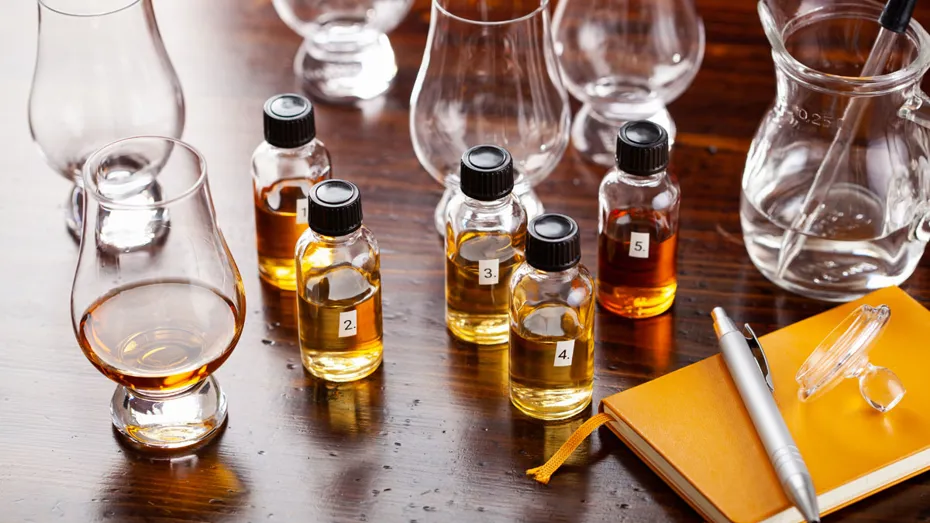Unique Procedures About Bourbon’s Aging Process?
Bourbon whiskey’s aging process is integral to its distinct flavour and character
The notable aspects are
1. New Charred Oak Barrels
- Legal Requirement: By law, bourbon must be aged in new, charred oak barrels. This differentiates it from other whiskeys, which can be aged in used barrels.
- Char Level: The inside of the barrels is charred to various levels (typically char level 3 or 4), which caramelizes the wood sugars and creates a rich, deep flavours profile with notes of vanilla, caramel, and toffee.

2. Impact of the Wood
- Interaction with the Wood: The charring process opens up the wood grain, allowing the whiskey to penetrate the wood and interact with the oak’s natural compounds. This interaction imparts flavours such as vanilla, caramel, and various spices.
- Filtration: The charcoal layer inside the barrel acts as a natural filter, removing impurities and contributing to the whiskey’s smoothness.
3. Climate Influence
- Temperature Fluctuations: The climate, especially in regions like Kentucky, plays a significant role. Seasonal temperature fluctuations cause the whiskey to expand and contract, moving in and out of the wood. This process accelerates the extraction of flavours from the wood.
- Warehouse Positioning: The location of barrels within the aging warehouse (rickhouse) affects aging. Barrels at the top of the warehouse experience more extreme temperature changes, leading to faster aging compared to those at the bottom.
4. Minimum Aging Period
- Legal Minimum: To be labelled as straight bourbon, the whiskey must be aged for a minimum of two years. Many premium bourbons are aged for much longer, often between four to ten years or even more.
- Bottled in Bond: Bourbons labelled as “Bottled in Bond” must be aged for at least four years under U.S. government supervision.
5. Single Barrel and Small Batch
- Single Barrel Bourbons: These are bottled from one individual barrel, showcasing unique characteristics and variations from barrel to barrel.
- Small Batch Bourbons: These are created by blending a small number of selected barrels, offering a more controlled and consistent flavor profile compared to single barrel bourbons.
6. Maturation
- Chemical Reactions: During aging, the bourbon undergoes various chemical reactions. Esters form, which contribute to the fruity and floral notes, while tannins from the wood add structure and complexity.
- Angel’s Share: Over time, some of the whiskey evaporates through the barrel. This is known as the “angel’s share.” The remaining whiskey becomes more concentrated and flavorful.
7. Environmental Conditions
- Humidity: The humidity levels in the aging warehouse also affect the aging process. Higher humidity can lead to more water evaporation, increasing the alcohol concentration, while lower humidity can result in more alcohol evaporation, leading to a mellower spirit.
- Barrel Rotation: Some distilleries rotate their barrels to ensure even aging, while others leave them in place, creating a variety of aging conditions within the same batch.
The unique aging process of bourbon whiskey, characterized by the use of new charred oak barrels, the influence of climate, the specific legal requirements, and the meticulous attention to detail by distillers, all contribute to its distinct and celebrated flavour. Each bottle of bourbon carries the essence of its aging journey, making it a truly remarkable and beloved spirit.
Share












